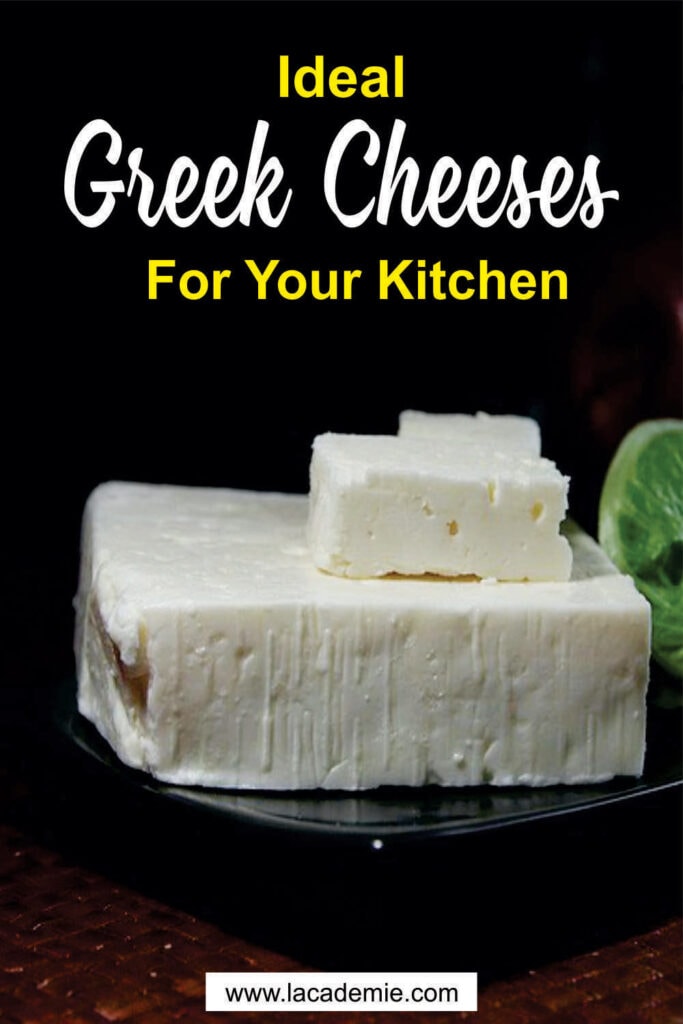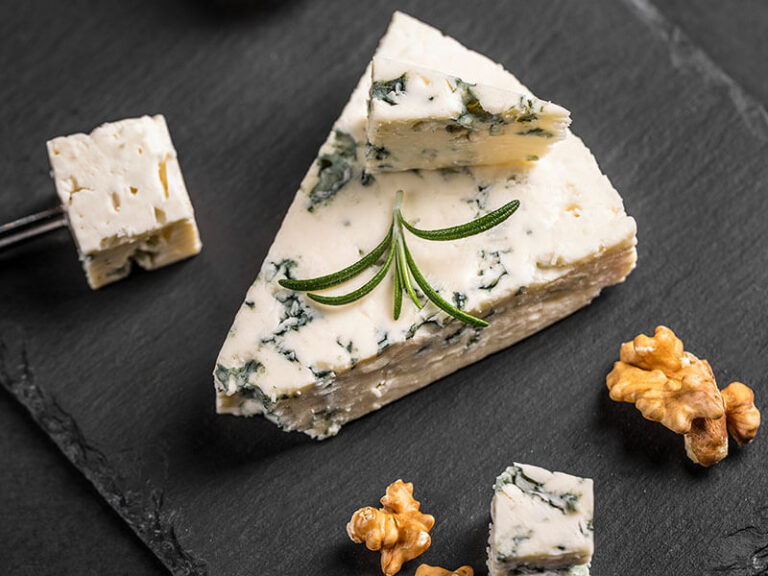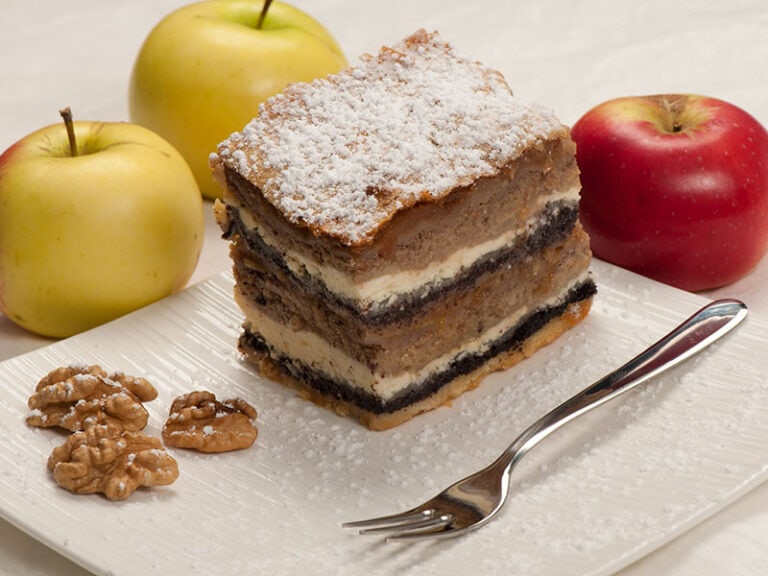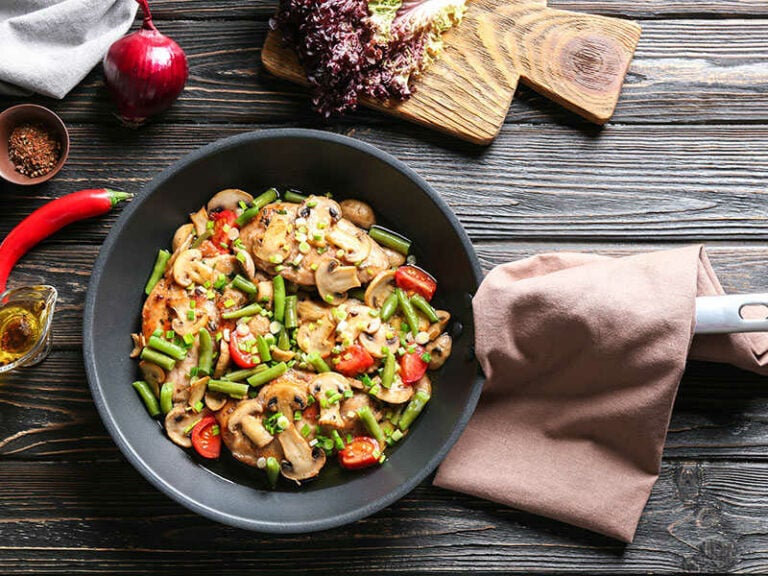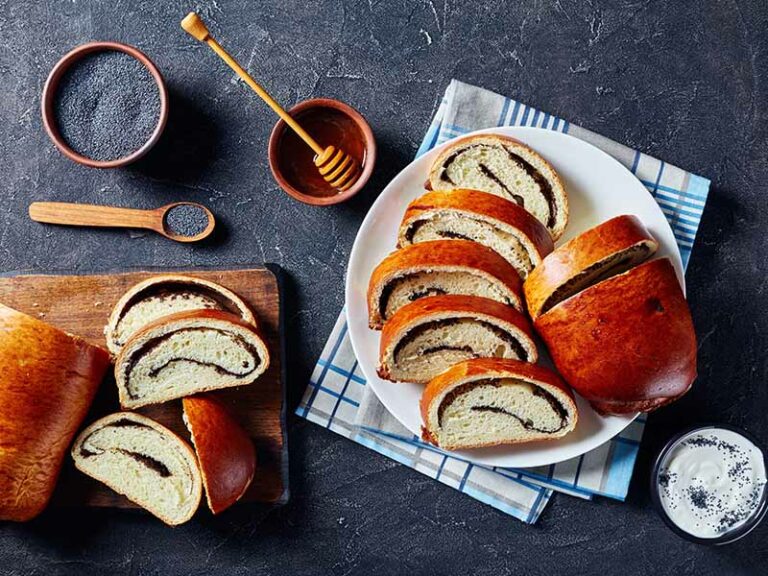From soft to hard, these Greek cheeses have marked differences in colors, flavors, and more. If you want to discover more about the gastronomy of this wonderful country, you should have a specific perspective on the different types of local cheeses.
The diverse cuisine of Greece gives birth to a variety of cheeses to suit consumers’ needs. This post will show you some of the most popular cheeses in Greece, their special characteristics, and how you can utilize this useful ingredient in your cooking.
Let’s take a look for more details!
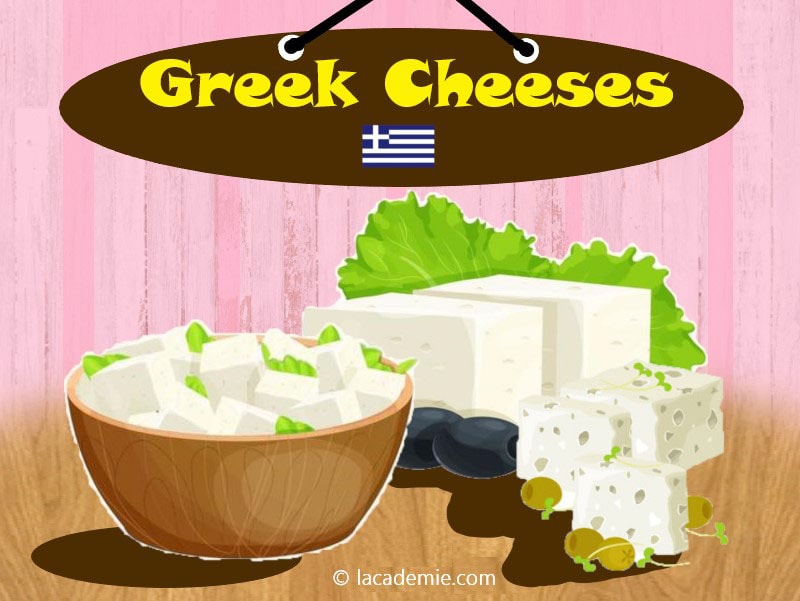
Enrich Your Next Meals With Different Types Of Greek Cheeses
Being one of the most vital parts of Greece’s gastronomy, Greek cheeses are included in many popular Greek dishes. Let’s take a look at the information below to have a better understanding of these popular types of cheeses.
Soft And Semi-Soft Cheeses
Known for their amazingly soft and moist texture, soft and semi-soft cheeses often have a high moisture content. Keep on reading the next section for in-depth descriptions of this type of cheese in Greece.
1. Feta Cheese
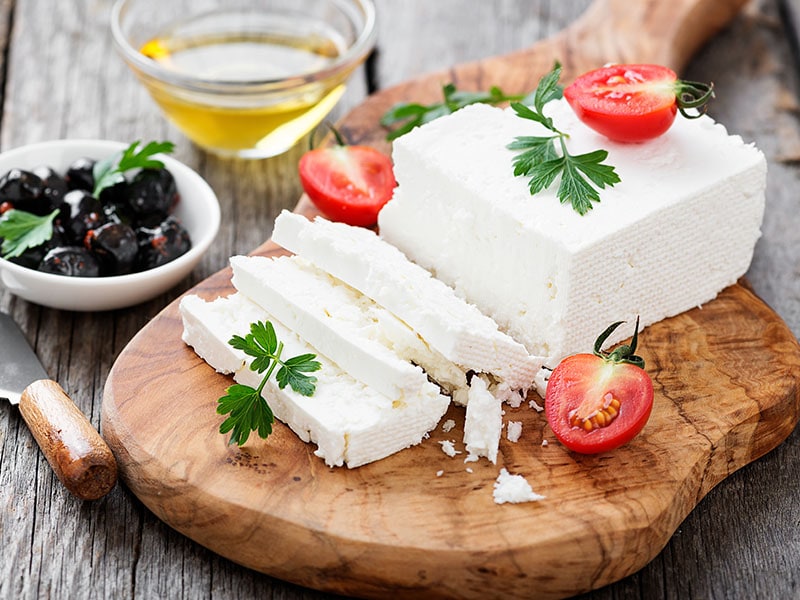
If you are a fan of Greek food, you will know that feta cheese is a must-have ingredient in any Greek kitchen. Not only is this sort of cheese popular in Greece, but it is also gradually asserting its position in the international market.
Feta cheese is a soft, white, and brined cheese manufactured from the milk of sheep or a combination of sheep’s and goat’s milk. The flavor of feta cheese, which is known for its crumbly and creamy texture, varies depending on the milk content used to produce them.
If you use whole sheep’s milk to make feta cheese, it will be tangier and saltier. On the other hand, its flavor will be milder when blended with goat’s milk. Feta cheese is often sold in a block form with no holes.
Feta cheese is an excellent complement to any recipe. You can eat it raw by tossing it into salads or sandwiches. Moreover, this form of soft cheese is also a loved ingredient for making different types of cookies, pastries, and a lot of delicacies.
Discover how Feta cheese is made here.
2. Mizithra
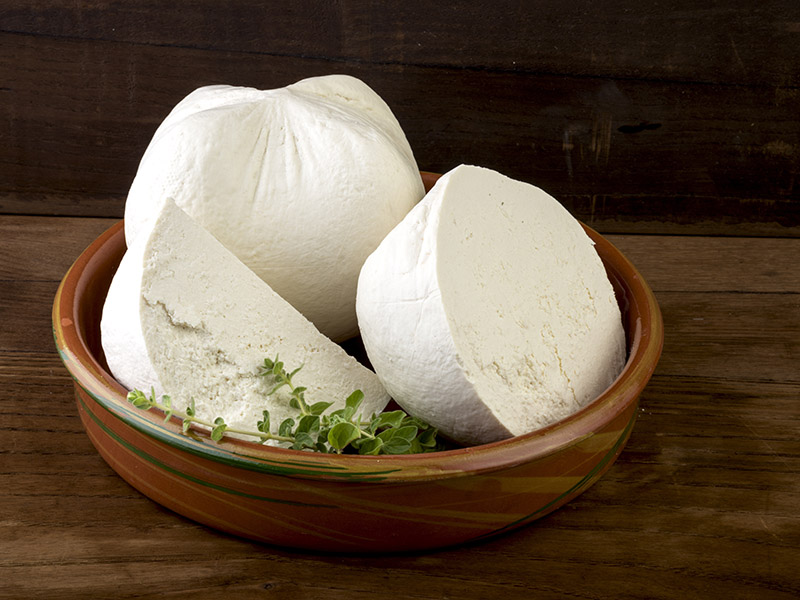
Mizithra is a soft cheese in Greece which is made of the remaining whey of other cheesemaking. Moreover, it can also be a combination of whey cheese with unpasteurized sheep’s and/or goat’s milk.
Originating from Crete, Greece, this type of cheese has many variations, ranging from fresh to aged cheese. Fresh Mizithra is often white and creamy with a granular texture. Moreover, it also has a sweet, milky, and tangy flavor.
Another variety of Mizithra called Xino Mizithra is a little sourer than Mizithra. You can use Mizithra as an ideal ingredient to add to your casseroles, soups or pastries, and a lot of different dishes.
3. Pihtogalo/Pichtogalo Chanion
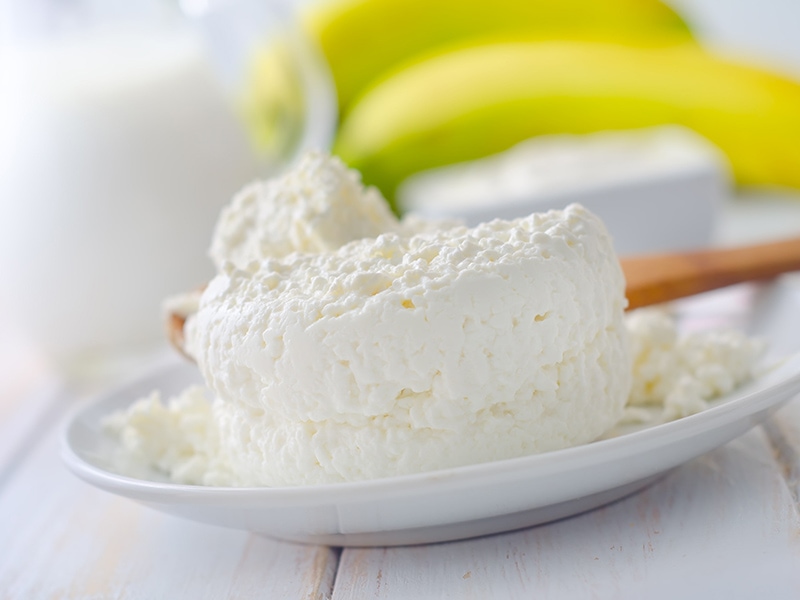
Pihtogalo, also known as Pichtogalo Chanion, is a slightly salty and sour cheese originating in Chania, located on the western side of Crete island, Greece.
It is a product of unpasteurized sheep’s or goat’s milk or even a combination of both. With a soft and spreadable texture, Pichtogalo Chanion is an ideal option to spread on your bread and serve with salads.
It is also a good accompaniment to a variety of pies and alcoholic beverages, such as ouzo (an anise-flavored liquor made from grapes) and raki (a Turkish brandy made of grapes and scented with anise flavor).
Are you curious about the place where this versatile cheese is made? This cheese is mostly manufactured in “mitata” rooms.
For those unfamiliar with the term, “mitata” refers to the Cretan name for the rudimentary shepherd’s dwellings with favorable conditions for the development of cheese.
4. Touloumotyri
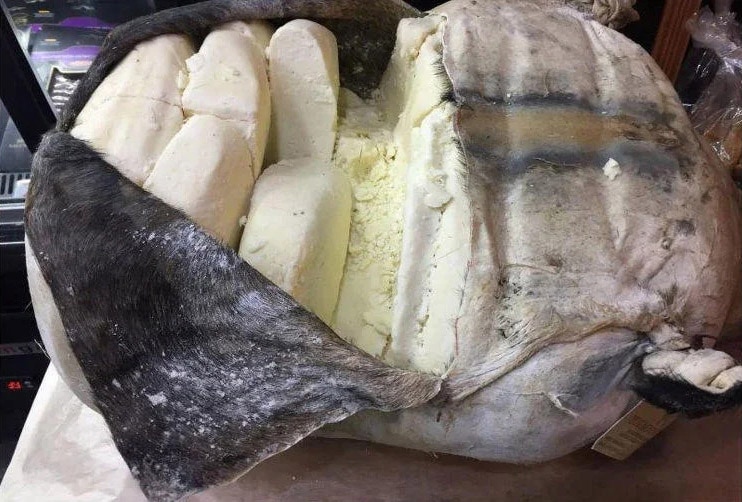
Touloumptyri is a type of cheese produced from pasteurized milk from cows, sheep, or even goats. This type of cheese, which has a white color, will win you with its pleasant aroma. Moreover, Touloumotyri has an earthy and creamy flavor.
Its flavor, on the other hand, will sharpen dramatically over time. Salads, pasta, and wine go well along with this sort of cheese. Touloumotyri is also a good option for maintaining a healthy diet, thanks to its low-fat content.
Originating from the Aegean islands, which are located in the east and south of mainland Greece, Touloumotyri is one of the oldest cheeses in Greece. It’s also creamy and moist, just like feta cheese, but a little sweeter due to the way it is cured.
5. Kalathi Limnou
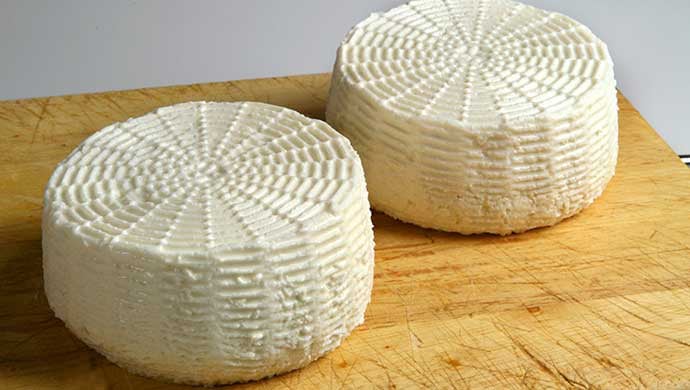
During the cheesemaking process, the curd used to produce Kalathaki Limnou is placed in “Kalathaki”, also known as the “small basket”. As a result, its name is linked to the process of creating this particular cheese.
With its characteristic cylindrical shape, Kalathaki Limnou is a mixture of sheep’s and/or goat’s milk. This sort of cheese takes about 60 days to mature.
You can use this product as an alternative cheese for saganaki (a Greek appetizer made by frying or broiling cheese) or serve it with a variety of fruits.
This brined cheese, produced on the island of Lemnos in the northern Aegean Sea, is salty and slightly acidic. Furthermore, its mild and pleasant flavor will attract you the first time you try it.
6. Galotyri
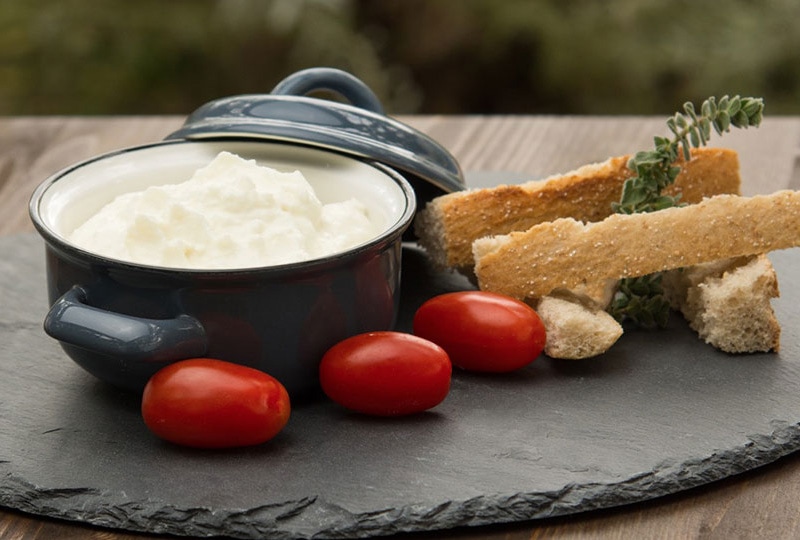
Another soft cheese that is famous in Greece is Galotyri. This cheese is native to Greece’s northern region. It is a combination of goat’s and sheep’s milk.
With its soft and spreadable texture, this cheese is creamy with a savory and milky flavor. It shares the same characteristics as yogurt. Traditionally, Galotyri was once a seasonal treat made largely throughout the summer.
Originating from Epirus and Thessaly of ancient Greece, Galotyri’s application is very diverse. You can use it as an important ingredient to improve the taste of crackers, tomato salads, or even roasted meat dishes.
7. Anthotyros
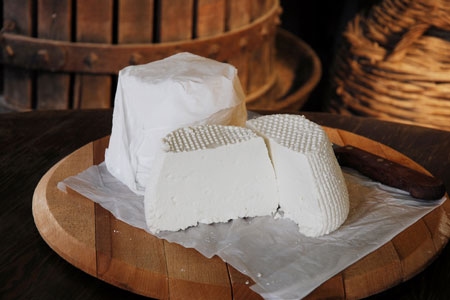
Unlike other types of cheese, you can find this type of cheese in many parts of Greece, such as Macedonia, Crete, Thrace, etc. Anthotyros is a Greek cheese prepared from the milk and whey of goats and sheep.
The name Anthotyro comes from the Greek word Anthotyro, which means “flowery cheese”, and refers to the pleasant fragrance of wild herbs that this cheese boasts. Anthotyros often comes in the shape of a truncated cone.
With a soft and creamy texture, Anthotyros has a moderate flavor. Moreover, there is a drier variant of Anthotyros called Anthotyro Xero available on the market. This kind is crumbly in texture and has a deep, spicy, as well as salty flavor.
This sort of cheese is commonly eaten as a table cheese or grated over pasta and salads. Moreover, you can utilize it in the making of pastries and pies. Another good idea is to combine it with fresh fruit like apples, figs, etc.
Let’s discover the easiest way to make Anthotyros at home through this instruction.
8. Anevato
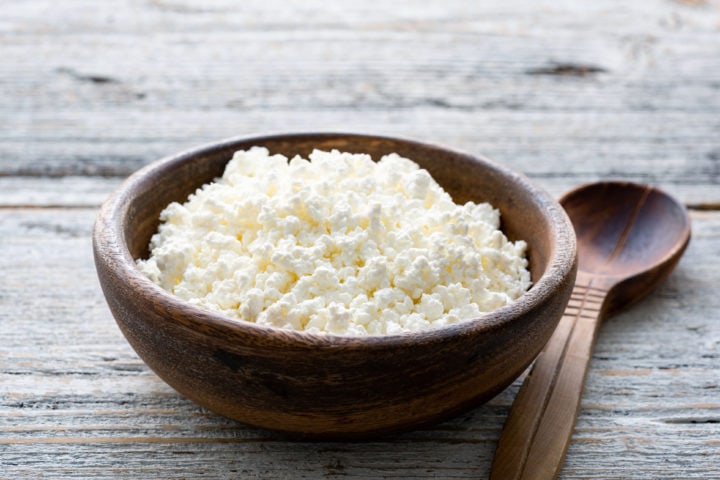
Originating from Grevena and Kozani in western Macedonia, Anevato is a soft and grainy cheese with a salty and tangy flavor. An interesting fact about this cheese is that its name is inspired by the process of making it.
Shepherds will collect the milk in the morning and let the curd rise during the day. Therefore, you can describe Anevato as “the cheese that rises”. Anevato is generally made in the summer months because the milk is thicker at that time.
Moreover, hot weather creates a favorable condition for the fermentation and salting process. This cheese requires 2 months to be ripened before available for use.
This is a well-known Greek cheese made from 100% goat’s milk. Therefore, it is also known as a typical Greek goat cheese. However, sometimes it can be a product of both goat’s milk and sheep’s milk.
Anevato is usually white, but sometimes, it appears in pale pink color. Don’t ignore this type of cheese if you are looking for an ideal addition to salads and pastries.
It is also a good option to pair with some types of wines, such as Mavrodafni, a red wine grape variety in Greece, and Moschato, a sweet Italian wine made from Muscat grapes.
9. Katiki Domokou
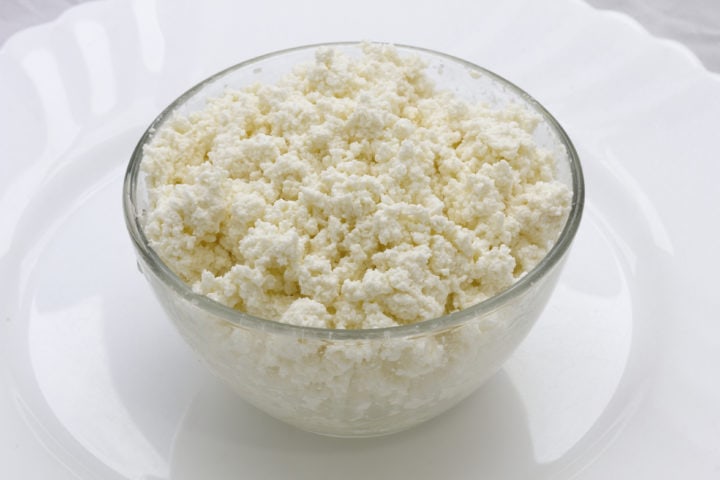
Katiki Domoukou is a Greek white cheese coming from Domokos, a municipality in Phthiotis, Greece. This is a cheese made from pasteurized goat’s and sheep’s milk.
Without a crust, Katiki Domokou is also a Greek cream cheese possessing a spreadable and creamy texture. Moreover, with its light and sour flavor, it is worth being a good dip for crackers or rusks.
This sort of cheese has the advantage of having an insignificant amount of fat and salt. Therefore, it is an excellent choice for those who follow a low-fat diet.
10. Kopanisti
Kopanisti is a traditional cheese of Mykonos, a Greek island in the southern part of the Aegean Sea. Moreover, this soft blue cheese is also famous in various areas of the Cycladic islands, including Tinos, Andros, and Syros.
Different from other cheeses, Kopanisti’s flavor is not fixed but changes dramatically depending on many conditions such as the weather, the season in which the milk is made, and a variety of other factors.
This type of cheese can be buttery, sour, sweet, piquant, and so forth. It’s extremely interesting, right? Kopanisti is based on a raw goat’s and sheep’s milk mix. This spicy cheese ranges in color from white to pale beige.
Kopanisti is well-known for its luxuriousness because if you want to produce 8 kilograms of Kopanisti cheese, you have to prepare about 100 kilograms of milk. You can make use of this cheese in desserts, pies, and salads.
11. Xygalo Siteias
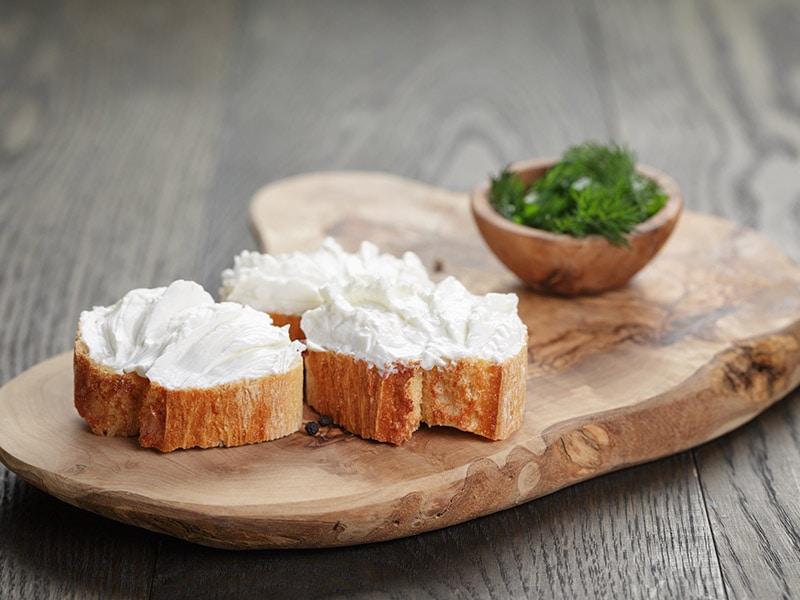
Do you want to enhance the flavor of your authentic Greek dishes for appetizers? If the answer is a “yes”, let’s consider Xygalo Siteias. Furthermore, it is also an ideal ingredient to make your salad better.
Xygalo Siteias is a soft and spreadable cheese manufactured in some regions belonging to Crete, Greece. It is also commonly made from goat’s or sheep’s milk or even a mixture of the two, just like other cheeses.
Known for its creamy and granular texture, Xygalo Siteias tastes acidic and a little salty. Don’t miss this component in the dressing of a salad. Moreover, you can also utilize this sort of cheese to make stuffed, fried potatoes or dolmades (stuffed grape leaves).
12. Manouri/Manoypi
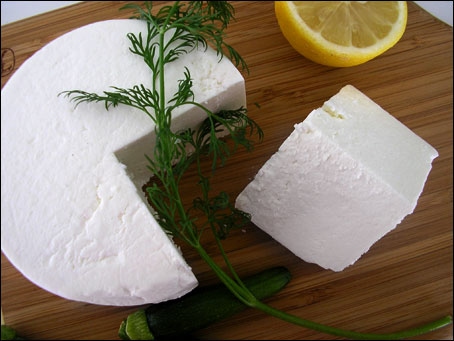
Manouri is the only semi-soft cheese on today’s list. Produced primarily in Thessalia and Macedonia, it is considered the leftover milk from the process of making feta cheese.
Therefore, you can understand that this type of cheese is made from sheep’s or goat’s milk whey. It has a similar texture to feta cheese but is a touch creamier. Moreover, it also has a lower salt content than the feta variety.
Manouri is grainy with a milky and slightly sour taste. It is a good substitute for yogurt, thanks to its citrusy flavor. You can use this sweet and rich cheese as an ingredient to crumble over salads or pasta.
Semi-Hard Cheeses
A perfect balance of moisture and aridity, these words are used to describe this type of cheese, semi-hard cheese.
Semi-hard cheese is not soft enough to spread and has a moisture level between 40% and 60%. Let’s discover more about this sort of cheese in Greece.
13. Sphela/Sfela
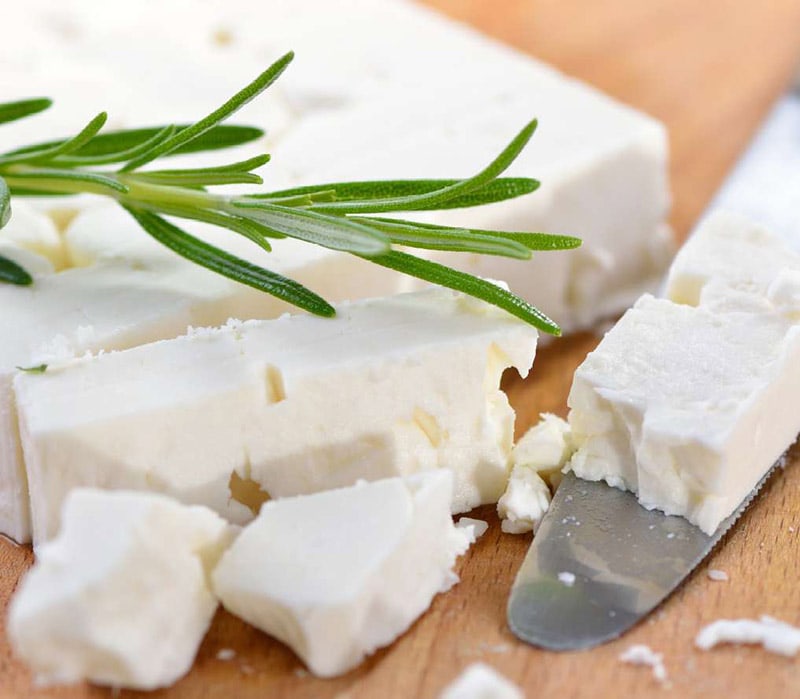
Sfela is a semi-hard cheese that comes from Messinia and Lakonia, regional units in the southern part of the Peloponnese peninsula, Greece. It is made from either sheep’s milk or goat’s milk. However, sometimes Sfela is a mixture of both.
The process of making Sfela cheese is not as complicated as you might think. First, the curds will be warmed. After that, people will suck out all the water remaining in them and divide them into small strips. The final step is to soak them in salt for at least 3 months.
Compared to feta cheese, Sfela is saltier and stronger in taste because it is preserved in brine. Furthermore, you can freely use it to make grilled or fried dishes because it doesn’t melt. Therefore, don’t miss the perfect blend of Sfela with meat or veggies.
14. Kasseri
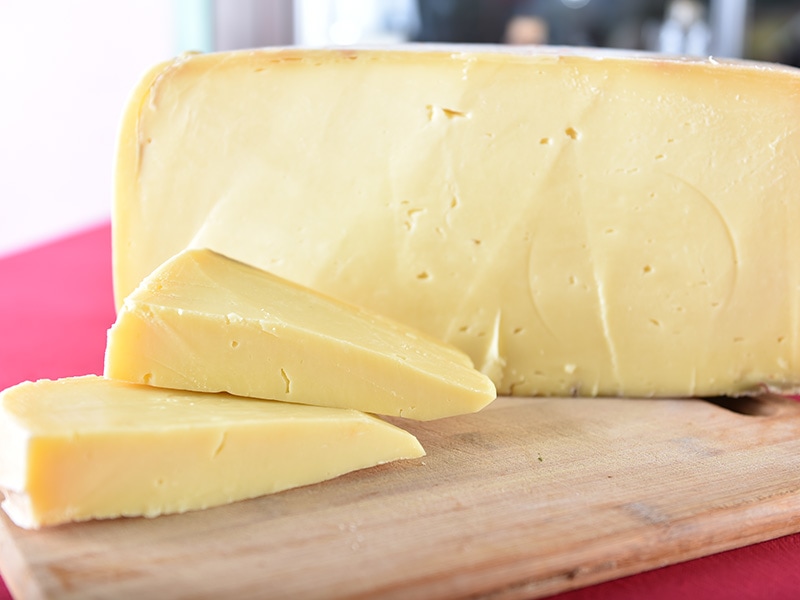
Known for its unique and unmistakable flavor, Kasseri is traditional Greek cheese. But it is also a Turkish delicacy whose name is taken from the Turkish word “kaşer” for kosher (foods suitable for Jewish people).
This product is made from pasteurized or unpasteurized sheep’s and goat’s milk. It is a specialty of Macedonia, Lesvos, and Xanthi in Thrace, regions in the north of Greece.
This pale yellow cheese has a stringy texture and is characterized by its buttery taste. You can use Kasseri as a table cheese to serve with sandwiches, omelets, and pastries.
Moreover, this type of cheese is mellow, faintly sweet, and slightly salty, which is an ideal substitute for mozzarella (a southern Italian cheese made from buffalo’s milk) and provolone (a cow’s milk cheese in Italy).
15. Batzos
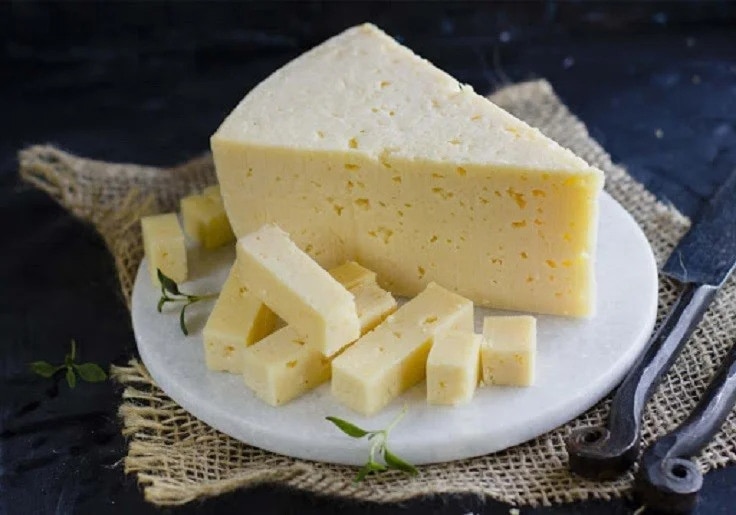
Come with a square-shaped appearance, Batzos is a popular cheese in the regions of Thessaly, Western and Central Macedonia. The color of this sort of cheese varies from white to yellow.
Other cheeses can be made from raw or pasteurized milk, but you can make use of both pasteurized or raw sheep’s and/or goat’s milk to produce this crumbly cheese. Batzos is a semi-hard cheese with a few little holes on it.
Piquant, salty, sour, and spicy, its flavor is so varied that you could mistake it with any other cheese. The way to use this white cheese depends on your preference because it’s suitable for many salads and baked delights.
In particular, you can use this sort of cheese to make Saganaki (Greek fried cheese), which amazingly stimulates your taste buds.
16. Metsovone
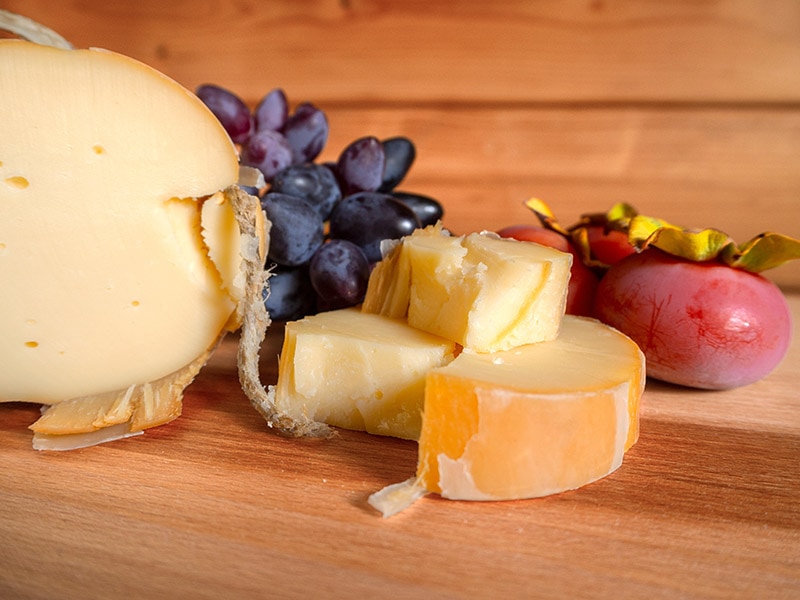
Manufactured with cow’s milk, Metsovone is a semi-hard cheese with a smoky flavor in Greece. However, sometimes it is also the combination of cow’s milk with sheep’s or goat’s milk.
This sort of cheese is mainly produced in Metsovo, a town in Epirus, in the mountains of Pindus in northern Greece. Its name is also derived from the region’s capital. This sharp-tasting cheese has a rich flavor and is also salty and spicy with a slightly yellow shell.
You can eat this type of cheese straight if you want, but I suggest you use it as an addition to make pies, butterflied steak, pizzas, or quiches. This combination will delight you magnificently.
Hard Cheeses
Less creamy and grainier in texture, hard cheese is also very popular in Greece and loved by a lot of people. Don’t skip the information below if you don’t want to miss this ideal ingredient for your cooking.
17. Saint Michael Cheese/San Michali Cheese
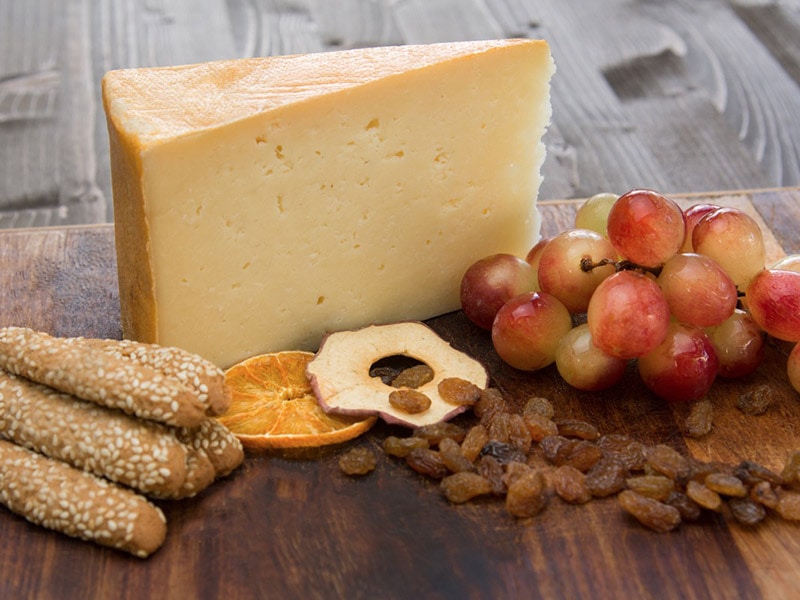
Known for its aromatic flavor, Saint Michael cheese is a product of cow’s milk that is partly skimmed, coagulated, and pasteurized. This savory hard cheese is manufactured in San Michalis, a small village located in the northern part of Syros, Greece.
However, many countries in the world also produce several types of cheese known as Saint Michael. So, you should double-check the information on the packaging to make sure you can choose the appropriate Greek variety.
Saint Michael has a hard texture with a mild flavor. People often describe its special flavor as a rich hazelnut and other nut aromas. Moreover, this sort of cheese is also buttery and a little salty.
Covered by golden rind, this hard cheese is a good option for becoming a required item in your kitchen. Don’t forget this wonderful cheese if you get the opportunity to visit Syros. It will be a fantastic addition to your omelets or casseroles.
18. Ladotyri Mytilinis
Spicy and salty, Ladotyri Mytilinis is a hard table cheese produced on the island of Lesbos, a Greek island located in the northeastern Aegean Sea. Instead of being brined, this type of cheese will be preserved in virgin olive oil.
This cylindrical cheese is also made from sheep’s and goat’s milk like other cheeses. Considered one of the rarest cheeses in Greece, Ladotyri Mytilinis has a pale yellow color.
Remember that the taste of this cheese will become sharper and more peppery if it is stored in olive oil for a long time. You can serve this type of cheese with light fruity wine and ouzo. That match will be a memorable experience.
19. Formaela
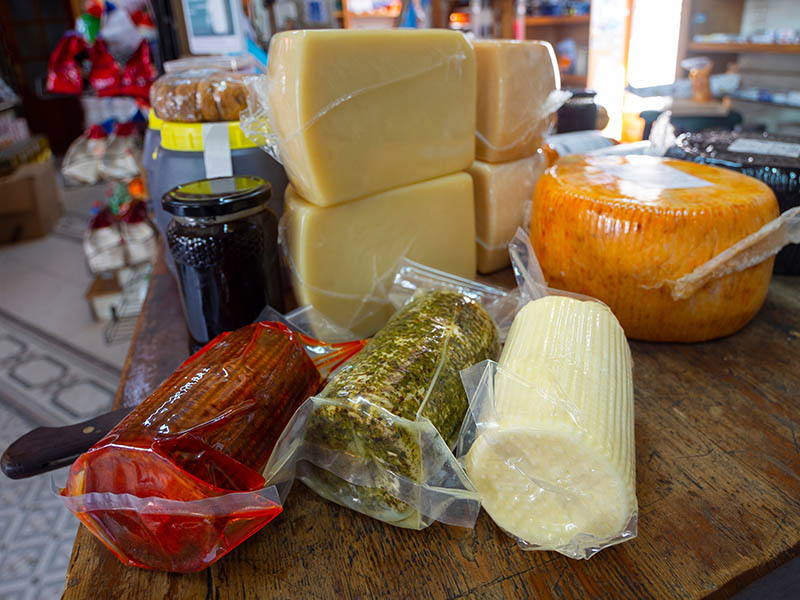
Formaela is a hard cheese made in Arachova, one of the most beautiful mountainous towns in Greece. With a hard and cohesive crust, this sort of cheese is pale yellow with a characteristic cylindrical shape.
Formaela is also a product from the combination of sheep’s and goat’s milk. Salty and milky but also vastly pungent, Formaela has its unique flavor thanks to the careful and rigorous selection of breeding animals that produce its ingredient.
They have to grow up in mountainous environments and consume only locally available plants and herbs. This sort of cheese can be eaten straight or used as an ingredient in grilled and fried recipes.
20. Graviera
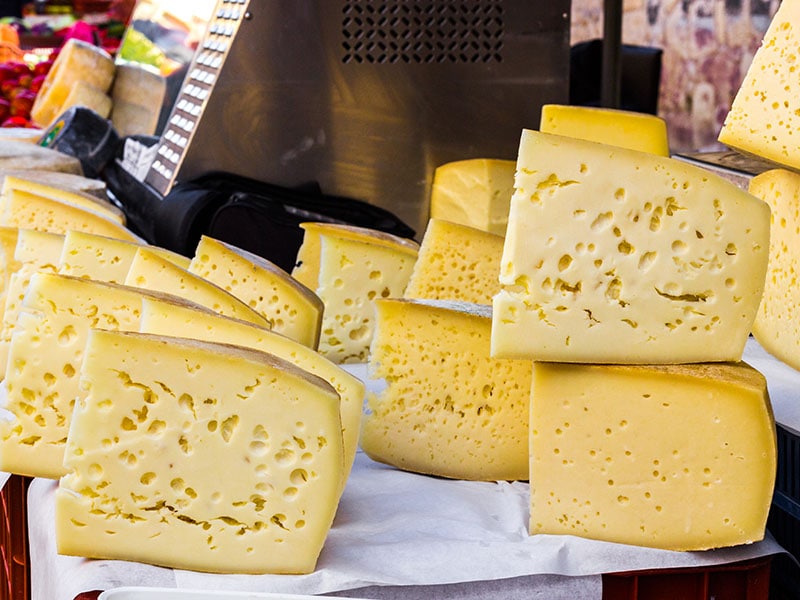
Graviera is Greece’s most popular cheese, coming in second only to feta cheese. This cheese is widely available in places such as Crete, Lesbos, and Naxos. Like other cheeses, Graviera is also a blend of goat’s and sheep’s milk.
Graviera is a firm cheese with a pale yellow and a criss-cross patterned crust. Furthermore, depending on its age, its flavor will shift from sweet to nutty. However, you will get the sweet and buttery taste of this cheese when it’s still young.
This type of cheese can be served as an appetizer or grated and used in soups and salads. Thanks to its versatility, you can easily buy this sort of cheese at any grocery store in Greece without any difficulty.
Do you want to make Graviera at home? Check this tutorial to get the answer.
21. Kefalotyri/ Kefalotiri
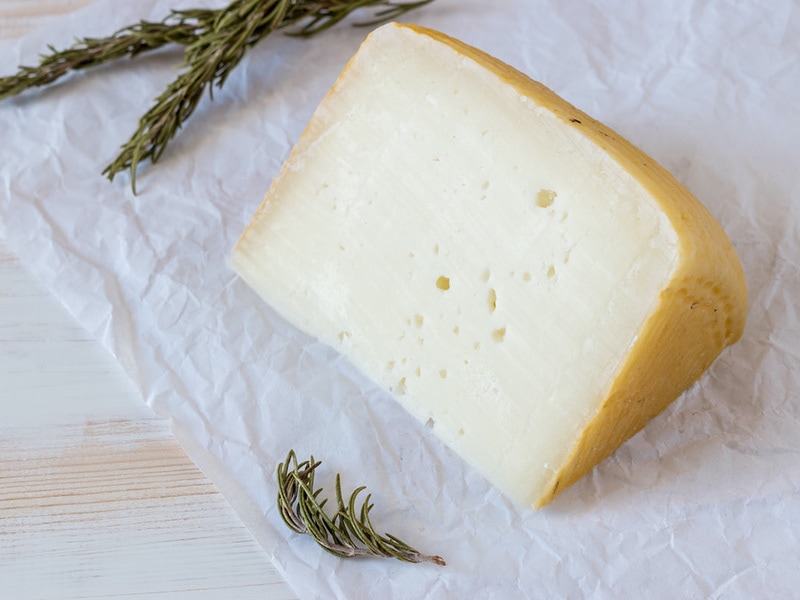
Kefalotyri is one of the most well-known ingredients in Cypriot dishes. With a hard and flaky texture, this sort of cheese is a product of sheep’s milk and/or goat’s milk.
Since Kefalotyri dates back to the Byzantine era, it is considered the predecessor of most hard cheeses from Greece. Its tangy, salty, and sharp flavors have been associated with Mediterranean culinary cuisine for centuries.
If you are interested in a drier texture and richer flavor of this cheese, you can consume aged ones. Coming in a light yellow appearance, Kefalotyri’s application is very diverse.
You can serve this sort of cheese with red wine, Avgolemono (Chicken lemon soup), or utilize it to make salads and pizza.
22. Kefalograviera
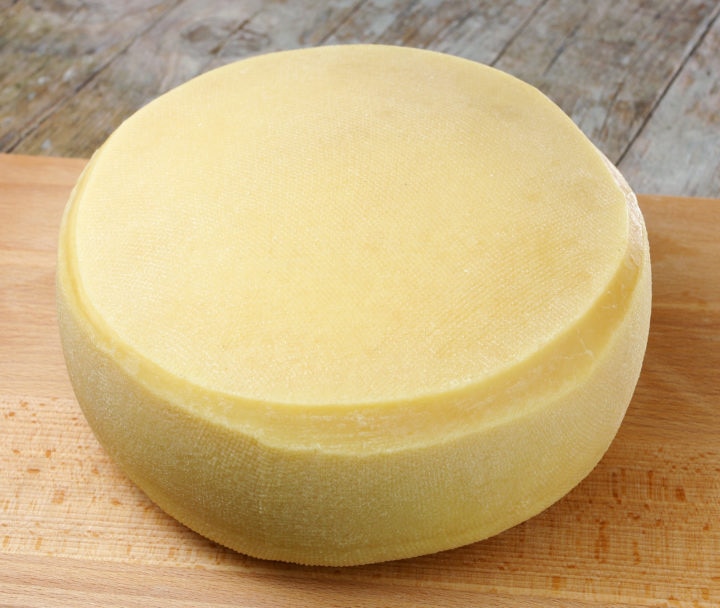
Are you curious about the name of this cheese? It seems to be the combination of the two names of Graviera and Kefalotyri, right?
The truth is that Kefalograviera is a mixture of the two kinds of cheese above because it’s a bit salty like Kefalotyri and is also mellow like Graviera.
Known as one of the newest cheeses in Greece, Kefalograviera is a mixture of sheep’s and goat’s milk produced in the rocky highlands of Epirus (a coastal region of northwest Greece) and Macedonia.
It is a firm yellow cheese with an intense and piquant flavor. This sort of cheese sets it apart from other cheeses, thanks to the holes spreading all over the body.
If you need a good pairing for Greek beverages such as wines, Kefalograviera is a good choice for you. Moreover, you can also use it as an ideal ingredient for baked recipes and gratins.
Cooking Is Now More Interesting When Having Greek Cheeses
What do you think about these different types of cheese in Greece? Each type of cheese always asserts its importance in a lot of typical Greek delicacies. Despite their variety, richness, and different flavors, they are always a wise choice for family dishes.
Well, that’s everything that I want to share with you today. I hope this knowledge is helpful for you. Finally, if you love this post, please share it with your beloved ones and leave something in the comment box to let me know your thoughts. Thank you!
